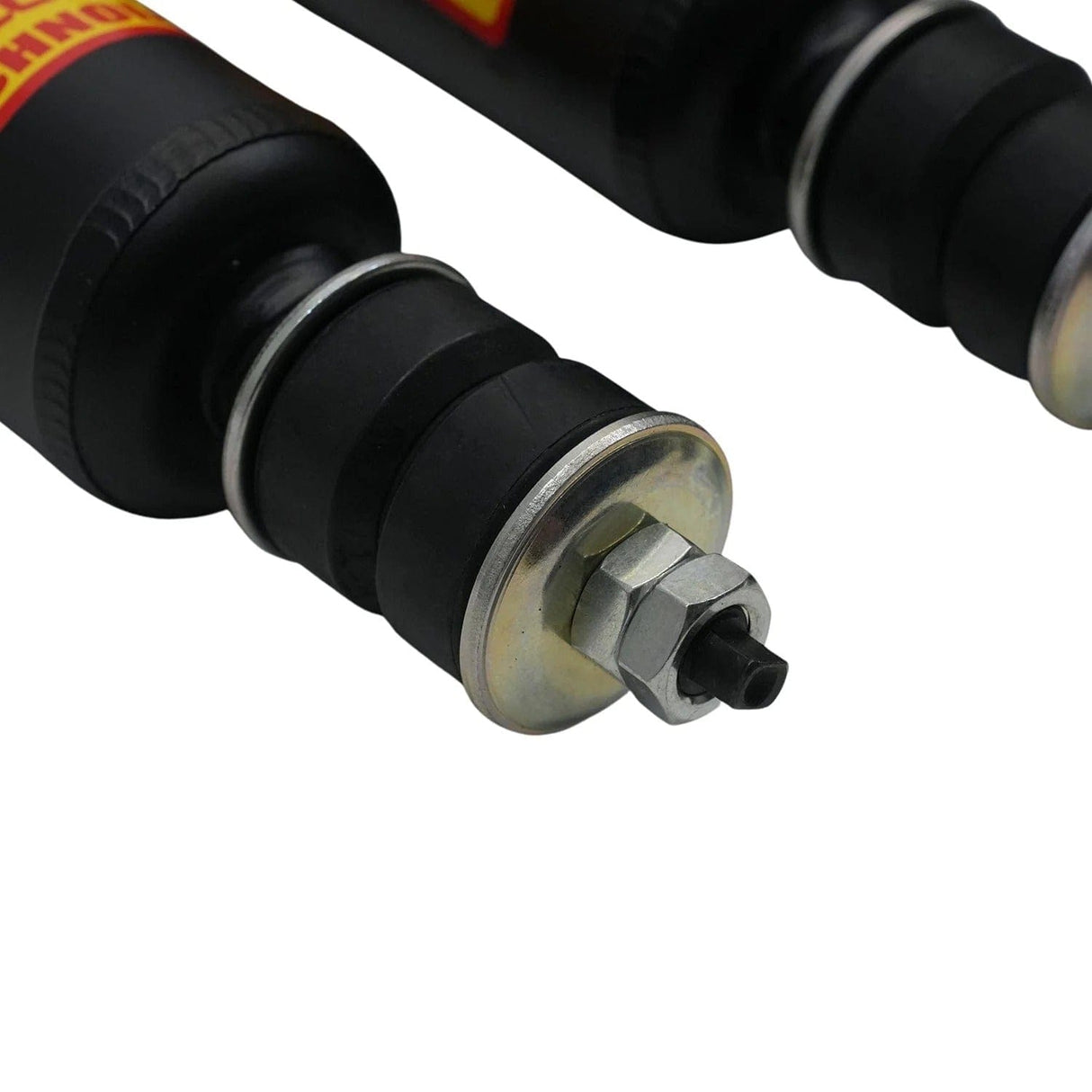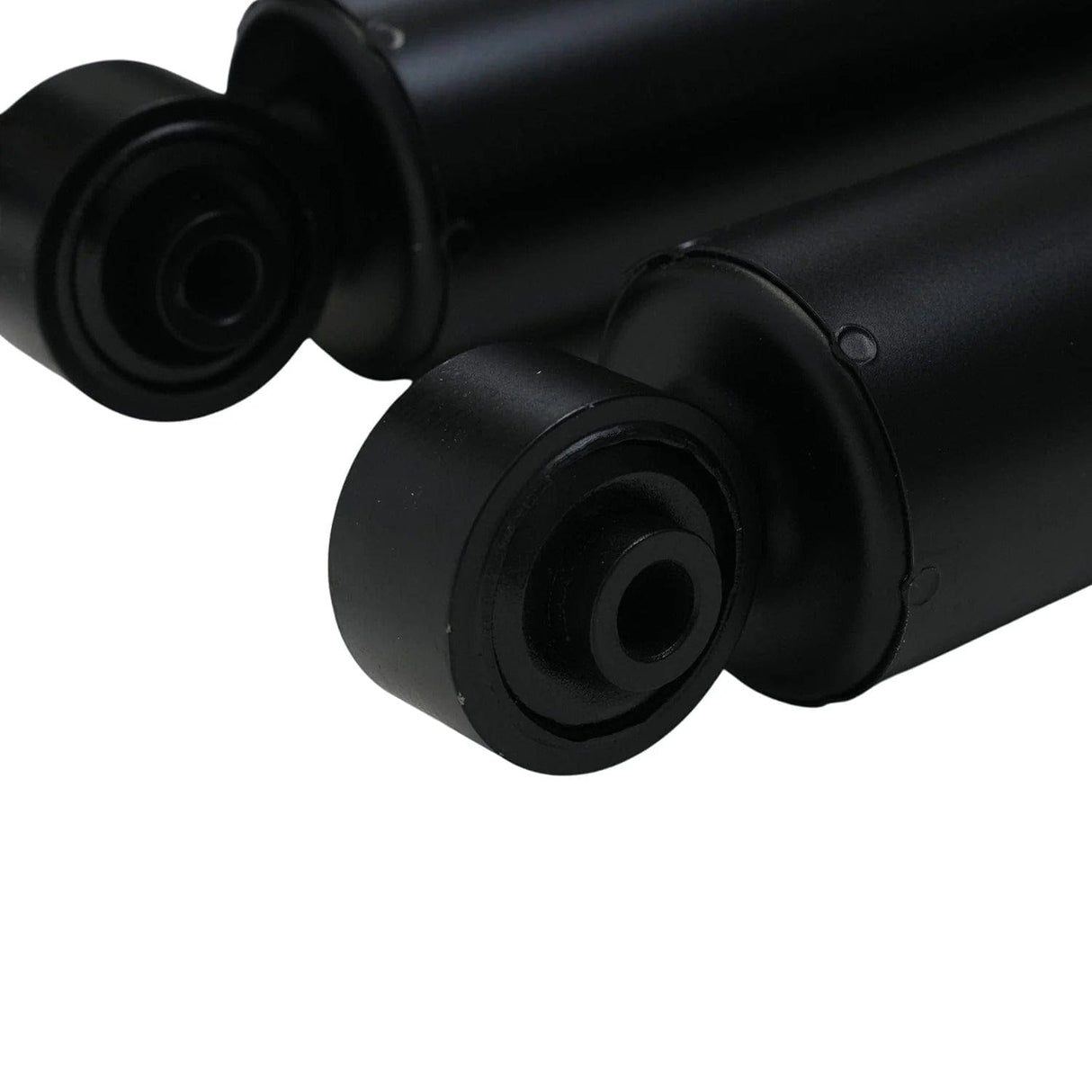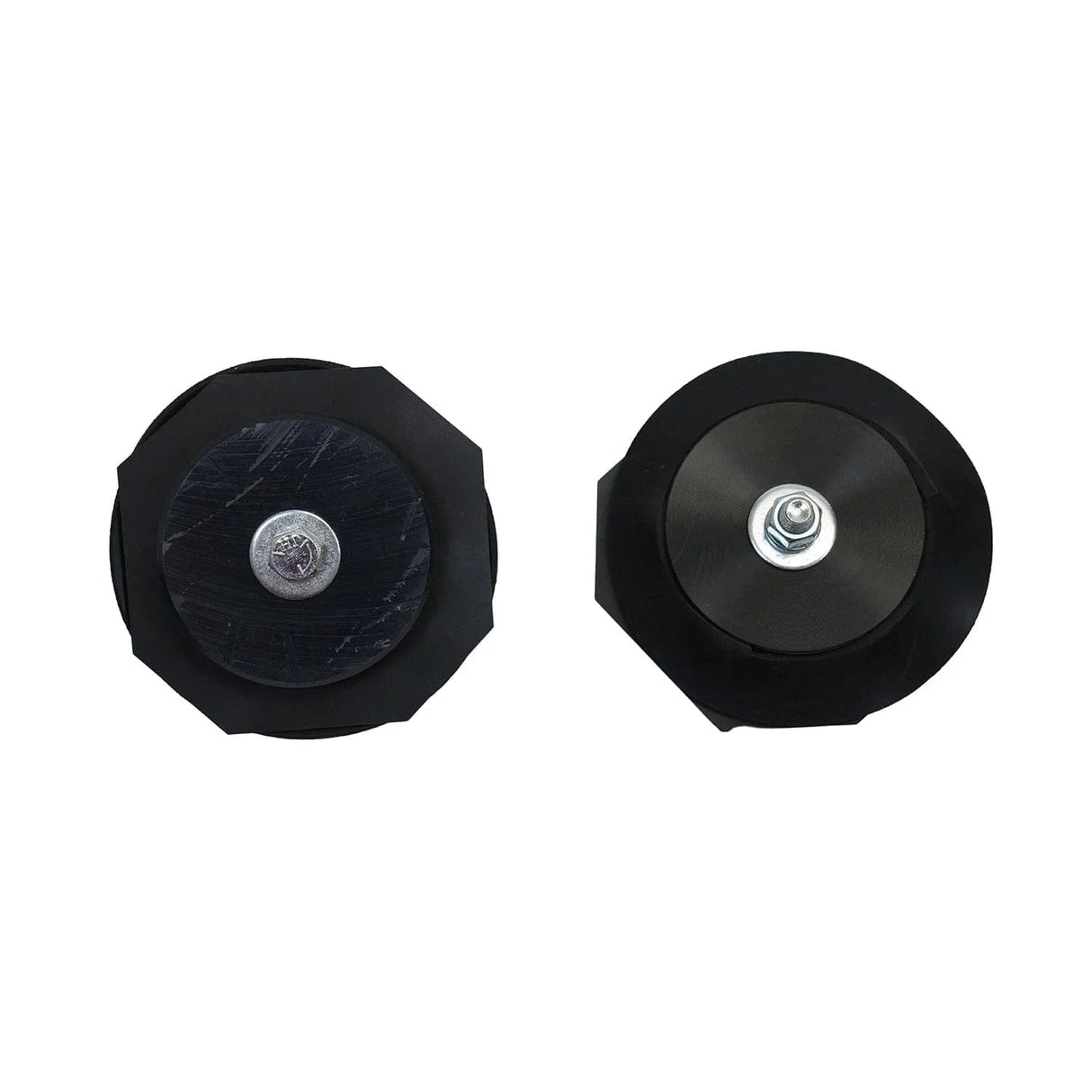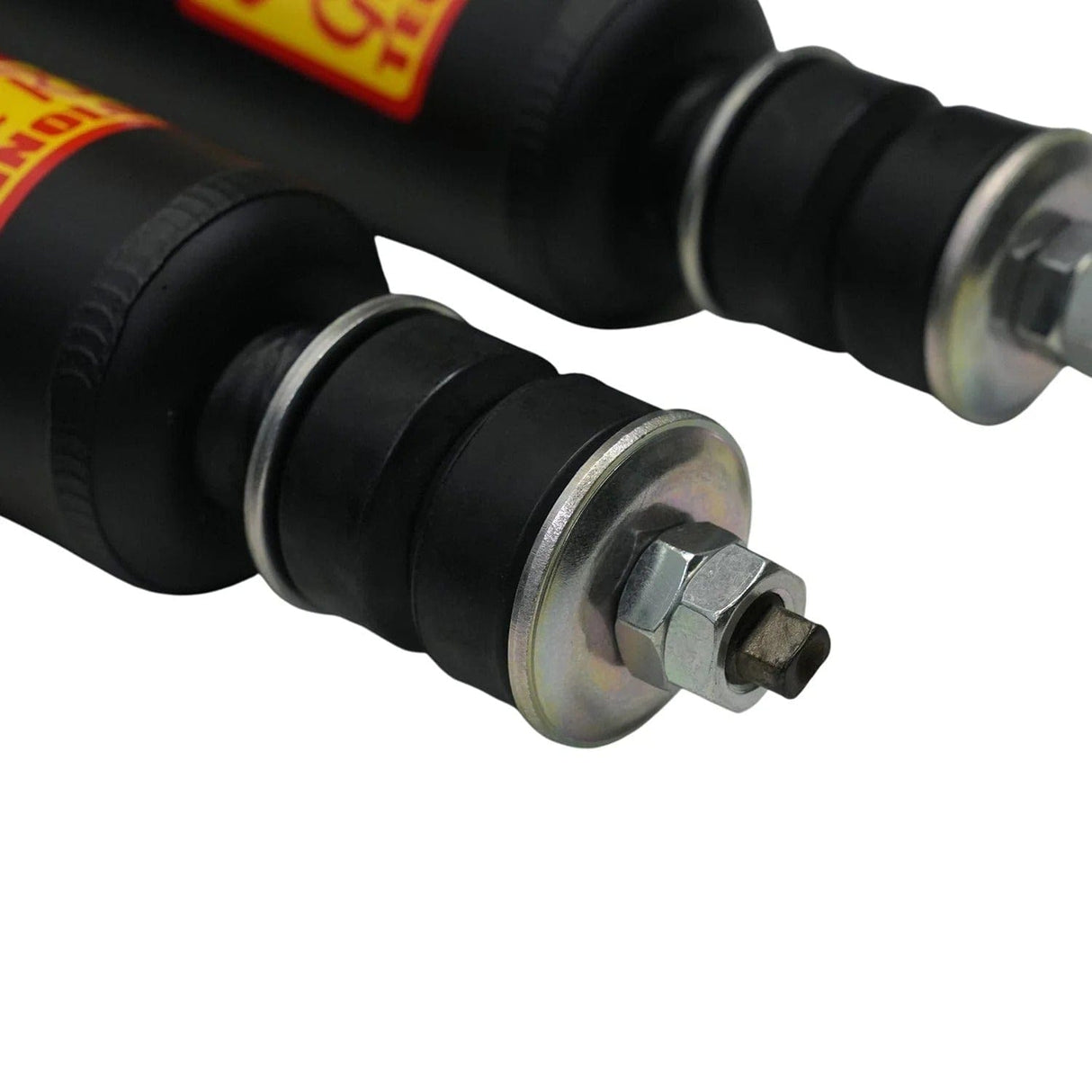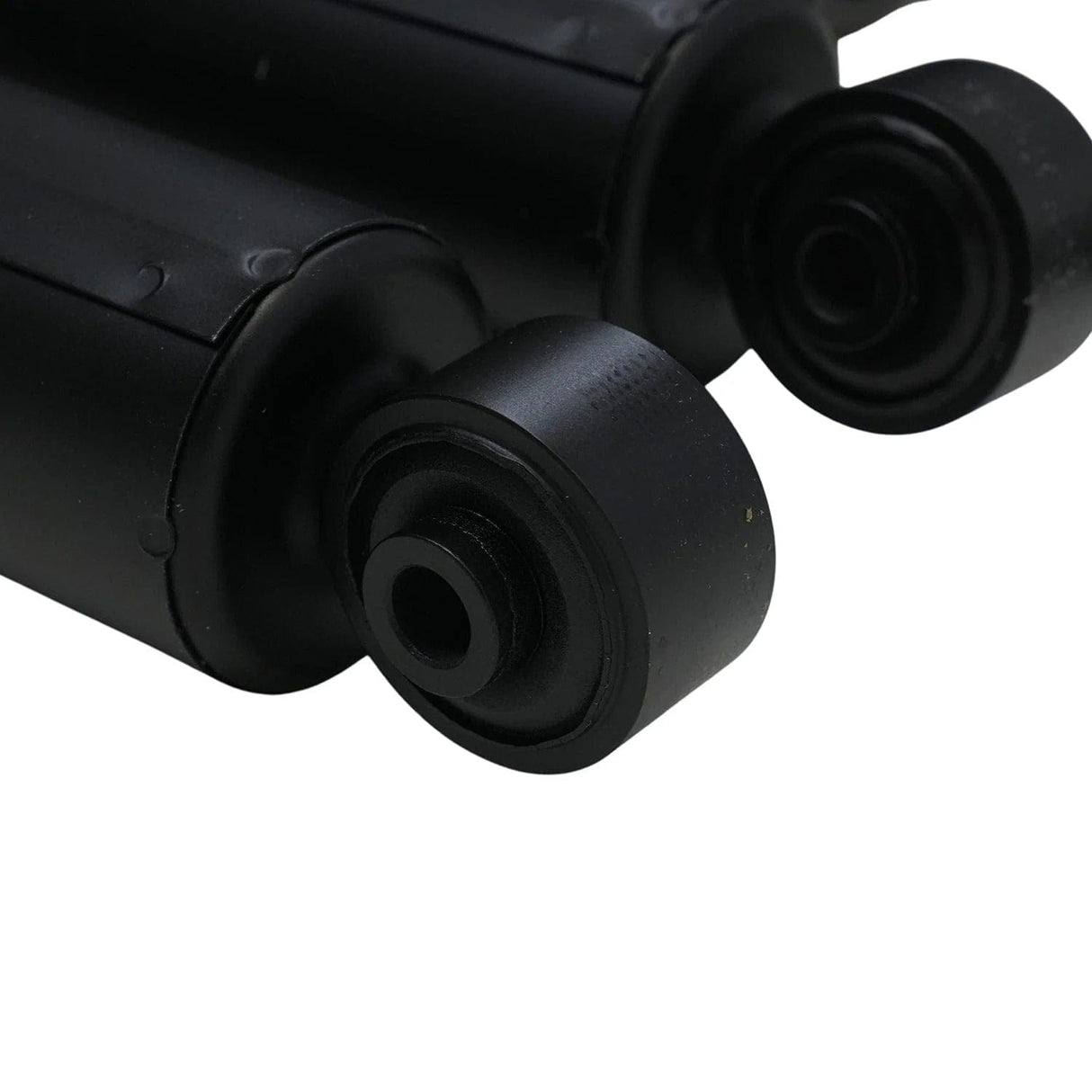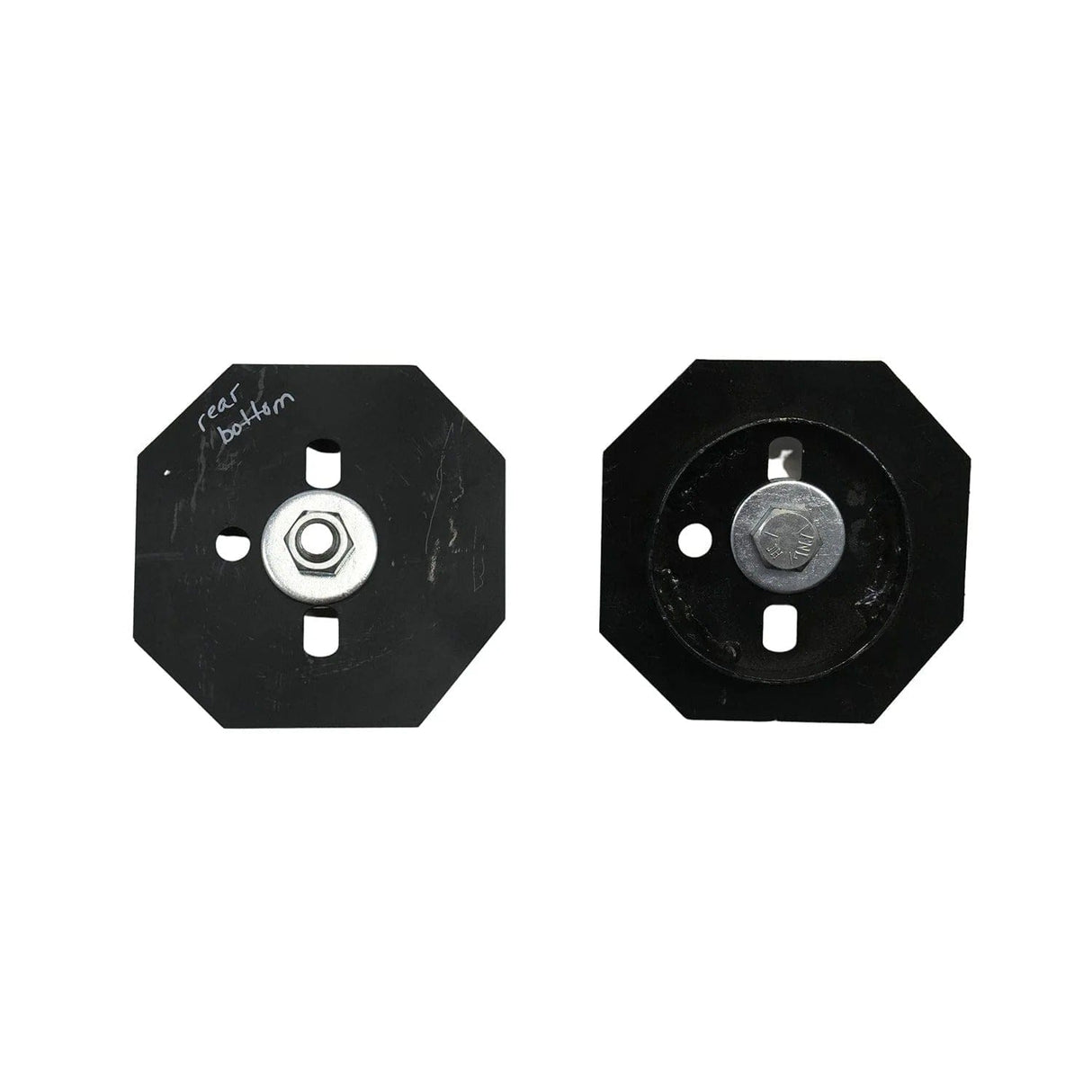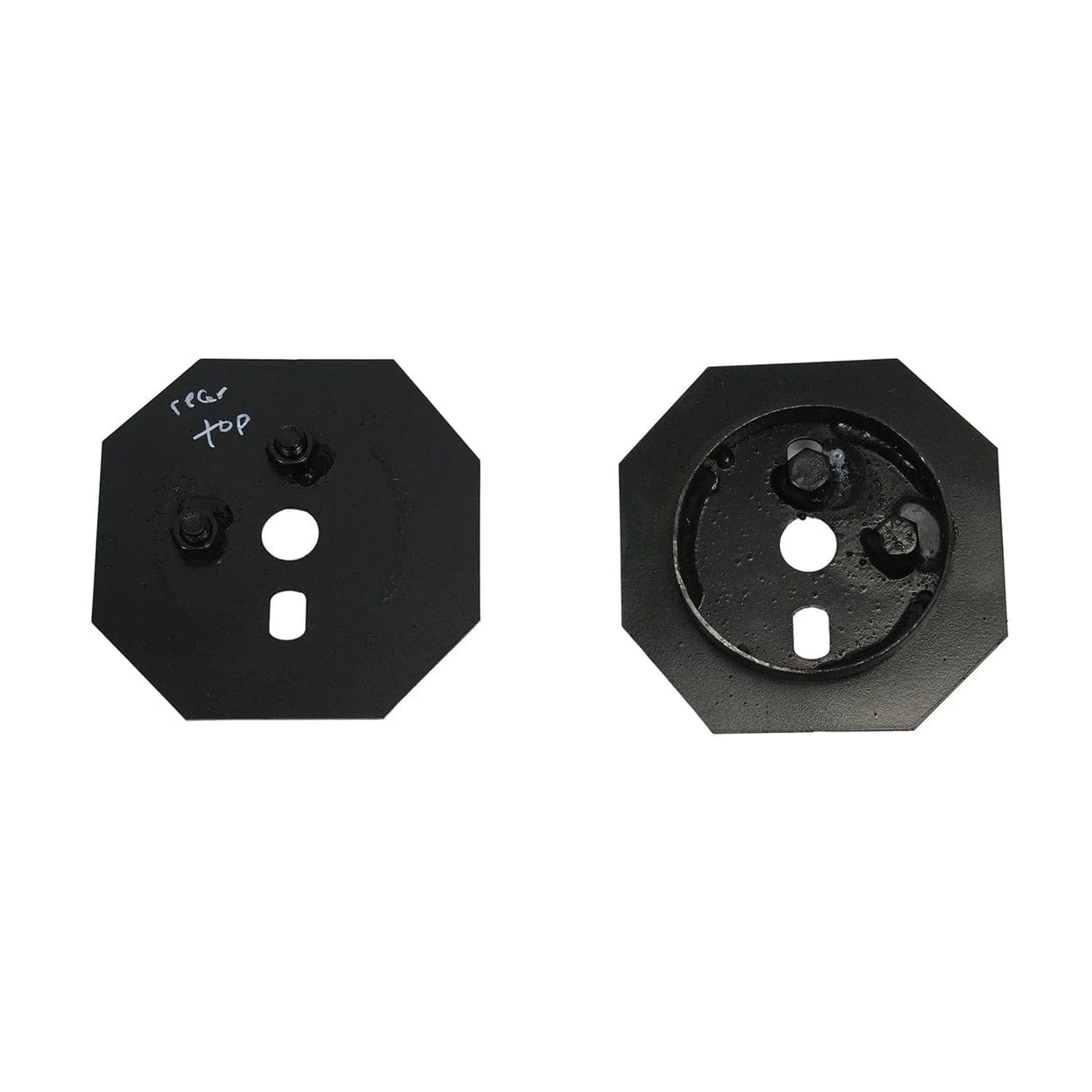1995-2002 Range Rover P38A Chassis 4-Wheel Air Suspension Conversion Kit With 4 Shocks (LB24F)
1995-2002 Range Rover P38A Chassis 4-Wheel Air Suspension Conversion Kit With 4 Shocks (LB24F) is backordered and will ship as soon as it is back in stock.
-
Same day ground shipping on orders placed before 3pm
-
1 year warranty on Strutmaster shocks, struts and springs
-
Hassle-free returns within 30 days
- Easy installation in 8 simple steps, manual and videos included
- Great ride quality through reliable coil springs with our patented Glide Ride Technology
- Complete kit to replace your old air suspension with perfect fit
Need assistance? Speak to an expert now!
Monday - Friday: 8am - 9pm
Saturday: 9am - 6pm
Super easy install. No issues at all. Strutmasters has a great product with easy to follow instructions, I'm not a certified mechanic but had no problem completing the job myself.
Description
Description
Included
Included
Air Suspension Conversion Kit Includes
- 2 Front Springs
- 2 Premium Front Shocks
- 2 Rear Springs
- 2 Premium Rear Shocks
- All Necessary Mounts
- All Necessary Hardware
- Detailed Instructions Including How To Disable The Suspension Warning Light
OEM Numbers
OEM Numbers
REB101740, ANR4684, RKB101460, REB101740, ANR4684, RKB101460, STC3672, STC3671
Why Choose Strutmasters
Why Choose Strutmasters
Strutmasters' air to non-air suspension conversion kit saves Range Rover P38A Chassis owners time, frustration, and money when the air suspension system goes bad. The kit, manufactured in America, includes two front springs, two premium front shocks, two rear springs, two premium rear shocks, and all necessary mounts. The kit is an affordable direct replacement solution that doesn't sacrifice quality. It eliminates the faulty reliance on complicated air parts for good. Customers appreciate the detailed instructions and online installation videos that help them get it installed in one hour per wheel. If further assistance is needed, Strutmasters' ASE certified experts are on hand to offer technical support over the phone. But what seals the deal for most customers is the low price. The kit costs a fraction of dealership direct replacement and individual aftermarket part replacement.
Notes
Notes
Product Notes
- Fits Range Rover P38A Chassis Only
Replaced Components
The 1995-2002 Range Rover P38A Chassis is built with the following suspension components:
1995-2002 Range Rover P38A Chassis Shock Absorbers (x4)- a metal tubing filled with gas-charged hydraulic fluid that is connected to the wheel of a vehicle in order to reduce the effects of vertical travel on a rough surface which controls the bounciness, and therefore comfort, of a vehicle.
1995-2002 Range Rover P38A Chassis Air Struts (x4)- struts that contain an air bladder whose dampening capabilities is controlled by the suspension control module; these have two functions. They connect the wheel of a vehicle to the driving surface in order to reduce the effects of vertical travel on a rough surface which controls the bounciness, and therefore comfort, of a vehicle. They also help maintain the vehicles correct ride height, especially whenever the amount of load put onto the vehicle changes.
1995-2002 Range Rover P38A Chassis Height Sensors (x4)- a linkage located near each wheel of a vehicle with any electronic suspension that, either mechanically or electronically, constantly measures the height of the vehicle, and reports this information back to the control module so that the computer can identify if changes in height need to be adjusted accordingly. The ride height sensor is a moving part, and like all moving parts, they will eventually wear out.
1995-2002 Range Rover P38A Chassis Air Lines- tubes that run from a compressor (air suspension) to the air struts which carry pressurized air to the air bags components in order to adjust the height of the vehicle, respectively.
1995-2002 Range Rover P38A Chassis Solenoids (x4)- usually L-shaped, these plastic components connect the electrical connection and lines of suspension components to the suspension control module on vehicles with active suspension. The solenoid regulates the air pressure for each air spring. Solenoids start to leak as they wear out causing the vehicle to sag or to lean. This will cause the ride height sensor to send a signal to activate the compressor in an attempt to inflate the air suspension and level out the vehicle. This excessive work load will eventually lead to total failure of the compressor.
1995-2002 Range Rover P38A Chassis Compressor- creates/sends pressurized to active suspension components. When the air suspension starts leaking, the compressor/pump starts working harder to try to keep the system inflated. By the time air suspension leaks down completely, sitting the vehicle on its tires, the compressor will either have failed or be well on its way to full failure. Buying replacement struts and taking the time to install them only to find out the compressor still needs to be replaced can be very frustrating, time-consuming, and expensive.
1995-2002 Range Rover P38A Chassis Dryer Assembly- used to keep moisture out of air lines and air springs in order to prevent freezing and internal cracking of these parts. Once air suspension starts leaking, moisture will build-up throughout the air system. Moisture damages the air suspension from the inside. The dryer will need to be replaced in order to eliminate the moisture and prevent any further damage.
1995-2002 Range Rover P38A Chassis Suspension Control Module- a computer which is responsible for the operations of the air suspension system and maintaining the vehicles correct ride height.
1995-2002 Range Rover P38A Chassis O-rings- Although they are the least expensive parts of the air suspension, they are responsible for maintaining the seal where all of the air lines connect. Be sure to replace the O-rings when repairing any air suspension system.
Suspension Failure Signs
An inability of the 1995-2002 Range Rover P38A Chassis to reach and maintain the proper ride height indicates a failed or leaking air suspension system. Early detection of a bad suspension is critical to avoiding total failure, so look for these signs. The most noticeable sign is a sudden height variance between different sides of the P38A. Typically, the rear or front end will sag and the opposite end will remain inflated. The vehicle may appear to be “squatting down.” There might be a shifting lean from one side to the other. Other signs to look for include an illuminated suspension warning light on the dashboard and an improperly working air compressor. If the air compressor has ceased working or runs too often then suspension failure is advanced.
What is a conversion kit
Who is Strutmasters
Description
Description
1995-2002 Range Rover P38A Chassis 4-Wheel Air Suspension Conversion Kit With 4 Shocks (LB24F) is the perfect solution to your air suspension problems. Designed to be very affordable, you can convert your air suspension to use passive shocks and coil springs for less than the price of replacing one original equipment air spring.
Included
Included
Air Suspension Conversion Kit Includes
- 2 Front Springs
- 2 Premium Front Shocks
- 2 Rear Springs
- 2 Premium Rear Shocks
- All Necessary Mounts
- All Necessary Hardware
- Detailed Instructions Including How To Disable The Suspension Warning Light
OEM Numbers
OEM Numbers
REB101740, ANR4684, RKB101460, REB101740, ANR4684, RKB101460, STC3672, STC3671
Why Choose Strutmasters
Why Choose Strutmasters
Strutmasters' air to non-air suspension conversion kit saves Range Rover P38A Chassis owners time, frustration, and money when the air suspension system goes bad. The kit, manufactured in America, includes two front springs, two premium front shocks, two rear springs, two premium rear shocks, and all necessary mounts. The kit is an affordable direct replacement solution that doesn't sacrifice quality. It eliminates the faulty reliance on complicated air parts for good. Customers appreciate the detailed instructions and online installation videos that help them get it installed in one hour per wheel. If further assistance is needed, Strutmasters' ASE certified experts are on hand to offer technical support over the phone. But what seals the deal for most customers is the low price. The kit costs a fraction of dealership direct replacement and individual aftermarket part replacement.
Notes
Notes
Product Notes
- Fits Range Rover P38A Chassis Only
Replaced Components
The 1995-2002 Range Rover P38A Chassis is built with the following suspension components:
1995-2002 Range Rover P38A Chassis Shock Absorbers (x4)- a metal tubing filled with gas-charged hydraulic fluid that is connected to the wheel of a vehicle in order to reduce the effects of vertical travel on a rough surface which controls the bounciness, and therefore comfort, of a vehicle.
1995-2002 Range Rover P38A Chassis Air Struts (x4)- struts that contain an air bladder whose dampening capabilities is controlled by the suspension control module; these have two functions. They connect the wheel of a vehicle to the driving surface in order to reduce the effects of vertical travel on a rough surface which controls the bounciness, and therefore comfort, of a vehicle. They also help maintain the vehicles correct ride height, especially whenever the amount of load put onto the vehicle changes.
1995-2002 Range Rover P38A Chassis Height Sensors (x4)- a linkage located near each wheel of a vehicle with any electronic suspension that, either mechanically or electronically, constantly measures the height of the vehicle, and reports this information back to the control module so that the computer can identify if changes in height need to be adjusted accordingly. The ride height sensor is a moving part, and like all moving parts, they will eventually wear out.
1995-2002 Range Rover P38A Chassis Air Lines- tubes that run from a compressor (air suspension) to the air struts which carry pressurized air to the air bags components in order to adjust the height of the vehicle, respectively.
1995-2002 Range Rover P38A Chassis Solenoids (x4)- usually L-shaped, these plastic components connect the electrical connection and lines of suspension components to the suspension control module on vehicles with active suspension. The solenoid regulates the air pressure for each air spring. Solenoids start to leak as they wear out causing the vehicle to sag or to lean. This will cause the ride height sensor to send a signal to activate the compressor in an attempt to inflate the air suspension and level out the vehicle. This excessive work load will eventually lead to total failure of the compressor.
1995-2002 Range Rover P38A Chassis Compressor- creates/sends pressurized to active suspension components. When the air suspension starts leaking, the compressor/pump starts working harder to try to keep the system inflated. By the time air suspension leaks down completely, sitting the vehicle on its tires, the compressor will either have failed or be well on its way to full failure. Buying replacement struts and taking the time to install them only to find out the compressor still needs to be replaced can be very frustrating, time-consuming, and expensive.
1995-2002 Range Rover P38A Chassis Dryer Assembly- used to keep moisture out of air lines and air springs in order to prevent freezing and internal cracking of these parts. Once air suspension starts leaking, moisture will build-up throughout the air system. Moisture damages the air suspension from the inside. The dryer will need to be replaced in order to eliminate the moisture and prevent any further damage.
1995-2002 Range Rover P38A Chassis Suspension Control Module- a computer which is responsible for the operations of the air suspension system and maintaining the vehicles correct ride height.
1995-2002 Range Rover P38A Chassis O-rings- Although they are the least expensive parts of the air suspension, they are responsible for maintaining the seal where all of the air lines connect. Be sure to replace the O-rings when repairing any air suspension system.
Suspension Failure Signs
An inability of the 1995-2002 Range Rover P38A Chassis to reach and maintain the proper ride height indicates a failed or leaking air suspension system. Early detection of a bad suspension is critical to avoiding total failure, so look for these signs. The most noticeable sign is a sudden height variance between different sides of the P38A. Typically, the rear or front end will sag and the opposite end will remain inflated. The vehicle may appear to be “squatting down.” There might be a shifting lean from one side to the other. Other signs to look for include an illuminated suspension warning light on the dashboard and an improperly working air compressor. If the air compressor has ceased working or runs too often then suspension failure is advanced.



